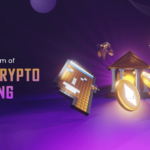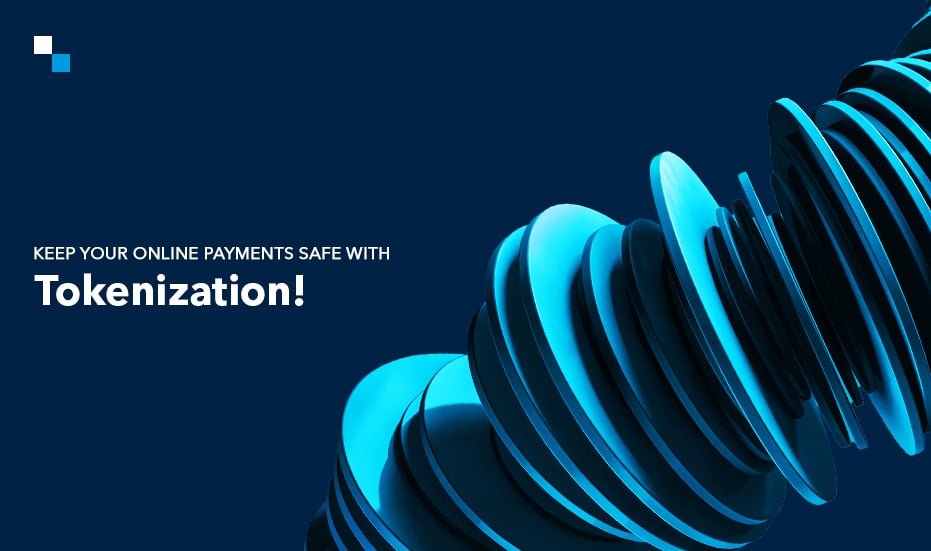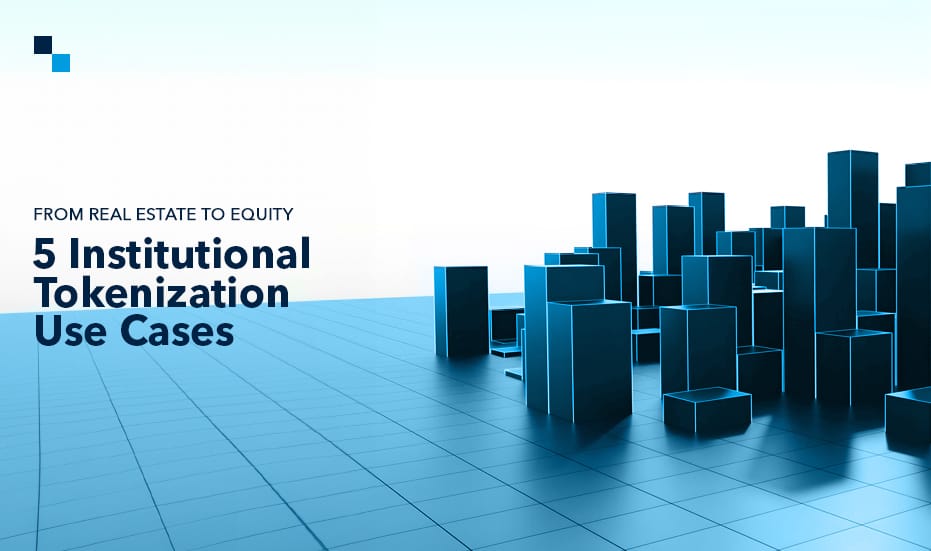
DeFi Crypto Banking Development: Paving Path To Future-Proof Banking
March 31, 2023
Cryptocurrency Exchange Platform Development- Everything You Should Know
April 3, 2023DeFi, or decentralized finance, is a growing movement that seeks to create a transparent, and accessible financial system leveraging blockchain technology. Since DeFi provides more accessible and open financial services to a global audience, it has the potential to disrupt traditional finance.
Here are some statistics about the current state of DeFi:
- The growth of DeFi has been explosive in recent years. In early 2020, the Total Value Locked (TVL) in DeFi was just $600 million USD. By Feb 2023, it touched over $50 billion USD.
- Ethereum is currently the most popular blockchain for DeFi development, with over 80% of DeFi protocols built on the Ethereum network.
- Decentralized exchanges (DEXs), lending and borrowing platforms, and synthetic asset platforms are some of the most popular DeFi applications
What is DeFi Asset Tokenization?
In the crypto world, DeFi asset tokenization refers to the process of creating a digital token that represents utility, asset, or security. It is the process of converting the ownership of an asset into digital tokens that are stored on a blockchain. Assets can be anything- real estate, stocks, or artwork. Tokens represent fractional ownership of the asset and they can be traded, bought, and sold on a blockchain platform.
These tokens can be traded, held, or transferred like any other cryptocurrency, but they are also backed by an underlying asset or represent a specific use case within a blockchain-based ecosystem.
There are different types of tokens that can be created through DeFi asset tokenization, including:
- Security tokens: Security tokens represent ownership in an asset, for instance, real estate or stocks. Security tokens are designed to be compliant with traditional financial markets.
- Utility tokens: Utility tokens are used to access a specific service or platform. For example, a utility token can be utilized to pay transaction fees on a blockchain network or to get access to a decentralized application (dApp).
- Asset-backed tokens: Asset-backed tokens represent ownership in a physical asset, like gold or real estate. They are designed to provide investors with exposure to an asset without actually owning the physical asset.
Tokenization has the potential to bring a range of benefits to the crypto world; it will help in increasing liquidity, lowering transaction costs, and improve accessibility to traditional asset classes.
Benefits of Asset tokenization
DeFi Asset tokenization brings several benefits, including:
- Increased Liquidity
By tokenizing assets, ownership can be divided into smaller units, making it easier to buy and sell partial ownership stakes in assets. It results in increased liquidity and access to assets that were earlier difficult to trade. - Lower Costs
Tokenization can lower transaction costs associated with traditional asset trading, such as broker fees and administrative costs. - Fractional Ownership
Asset tokenization enables fractional ownership of assets, making it possible for a larger number of investors to participate in an investment, reducing barriers to entry. - Transparency
Tokenization increases transparency and accountability by providing a transparent record of ownership and transaction history of the asset. - Security
Tokenization on a blockchain enhances the security and immutability of transactions, which results in reducing the risk of fraud and increasing trust in the asset. - Global access
With asset tokenization one can diversify investment portfolios and hence can increase investment opportunities. Investors get global access to previously inaccessible assets.
Guide to DeFi Asset Tokenization
Schedule Free DemoReal-World Use Cases of Asset Tokenization
Asset tokenization has numerous real-world use cases in a variety of industries. Here are some examples:
- Real Estate
Tokenizing real estate assets can provide fractional ownership opportunities to a larger pool of investors and increase liquidity in the market. DeFi asset tokenization can also reduce the barriers to entry for real estate investment, allowing smaller investors to participate. A market report suggests that a $66M building is going to be tokenized on the Ethereum blockchain soon under a record deal. In 2019, a luxury hotel in Aspen, Colorado called the St. Regis Aspen Resort was tokenized using blockchain technology. The hotel was valued at $224 million, and the owner, Elevated Returns, decided to divide the ownership into 18.9 million tokens, with each token representing a fractional ownership in the hotel. - Artwork
Tokenizing artwork allows for fractional ownership, providing a way for investors to own a piece of valuable art without having to purchase the entire piece. It also creates a more transparent and accessible market for artwork, increasing liquidity. Artists can tokenize their work in a hassle-free manner, Andy Warhol’s painting “14 Small Electric Chairs (1980)” was sold for around £4.2 million. Maecenas tokenized the artwork by dividing it into 31.5 million digital tokens, called “ART,” which were sold to investors on the platform. - Commodities
DeFi development services also provide tokenization of commodities, such as gold or oil, can provide investors with fractional ownership opportunities and create a more liquid market for commodity trading. For instance, Open Mineral is a Swiss-based platform that uses blockchain technology to tokenize physical commodities, such as metals and minerals, and trade them on a digital marketplace. The platform allows commodity producers and buyers to directly connect and trade without intermediaries, making the trading process more efficient and transparent. The physical commodities are tokenized, which means that each unit of the commodity is represented by a digital token on the blockchain.
- Intellectual Property
Tokenizing intellectual property rights, such as patents or copyrights, can provide fractional ownership allowing for more flexible licensing arrangements. LEXIT is a blockchain-based marketplace that allows the buying and selling of intellectual property (IP) assets in the form of digital tokens.
The platform leverages smart contracts to automate the IP transfer process and also ensures that the buyer receives all the necessary documentation and rights associated with the IP asset. - Venture Capital
DeFi asset tokenization of venture capital investments can provide fractional ownership in startup companies, allowing for more investors to participate in the investment and potentially increase returns. A real-world example of asset tokenization in venture capital is the platform called SPiCE VC. SPiCE VC is a blockchain-based venture capital fund that allows investors to buy tokens that represent ownership in a portfolio of early-stage companies. The platform uses smart contracts to manage the investment process and automate the distribution of returns to investors. - Debt Instruments
Tokenizing debt instruments, such as bonds or loans, can create a more liquid market and helps in efficient transfer of ownership. One real-world example of asset tokenization in debt instruments is the “Bond-i” bond issued by the World Bank in 2018. It was the world’s first bond that was created, allocated, and transferred on a blockchain platform. The bond was issued using Ethereum blockchain technology and was designed to test the feasibility and benefits of using blockchain for debt instrument issuance. - Sports Teams
Tokenizing sports teams can provide fractional ownership opportunities to fans, increasing engagement and loyalty. In 2020, FC Barcelona, one of the most popular football clubs in the world, launched its own Fan Token in partnership with the blockchain platform Chiliz. Fans could purchase the tokens using the Chiliz app, and use them to vote in club polls and access exclusive content and rewards. In addition to FC Barcelona, other major football clubs such as AC Milan, Juventus, and Paris Saint-Germain have also launched their own Fan Tokens.
Key Steps to Asset Tokenization in the DeFi Space
Here are the key steps to asset tokenization in the DeFi space:
- Asset Selection
The very first step to DeFi asset tokenization is to select the asset that you want to tokenize. The asset can be anything- real estate, commodity, artwork, stocks, or any other asset of your choice that has value and can be represented as a digital token. - Legal and Regulatory Compliance
Asset tokenization involves legal and regulatory compliance, which can vary by jurisdiction. Taking help of legal and regulatory experts can be of importance to ensure compliance with local laws and regulations. - Tokenization Platform Selection
The next step involves selecting a tokenization platform that supports the asset that you want to tokenize. There are various blockchain-based tokenization platforms available, each with their own features and benefits. - Smart Contract Development
Once you have selected the tokenization platform, the next step is to develop the smart contract that will govern the tokenized asset. It includes defining the ownership and transfer rights of the asset, as well as any other terms and conditions. It’s best to choose a reputed DeFi development company for the task. - Token Issuance
After the smart contract is developed, the tokens representing fractional ownership of the asset are issued to investors. There are two ways of doing so- either through an initial token offering (ITO) or security token offering (STO). - Asset Custody
Asset custody is a critical aspect of asset tokenization, as it involves storing the physical asset securely and ensuring that it is properly insured. This can be done through a third-party custodian or by using a decentralized custody solution. - Secondary Market Trading
Once the tokens are issued, they can be traded on secondary markets; it provides liquidity to investors who want to sell their tokens and allows new investors to buy tokens.
Final Words
Asset tokenization has the potential to revolutionize many industries by providing greater efficiency, accessibility, and liquidity. As blockchain technology continues to evolve and become more widely adopted, we will witness the emergence of more real-world use cases for asset tokenization. Are you looking for an experienced Defi Development Company for DeFi asset tokenization? Get in touch with Antier!



